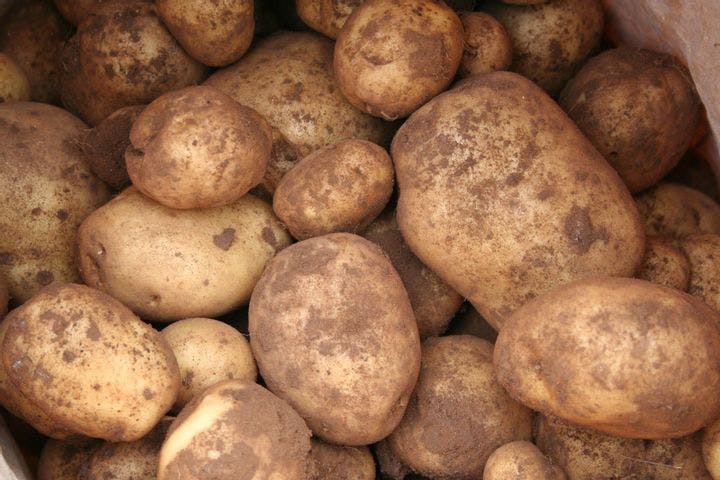Fall 2011
The Mighty Spud
– The Wilson Quarterly
The population increase and urbanization in Europe during the 18th and 19th centuries owes much to the potato.
Consider the potato: It’s dull in color, bland in taste, and prone to rot. Europeans initially suspected the spud of being poisonous because it bore a resemblance to the skin of leprosy victims. But the humble tuber has spurred great things, according to economists Nathan Nunn of Harvard and Nancy Qian of Yale. The significant increase in population and urbanization in Europe during the 18th and 19th centuries owed a good deal to the incorporation of the spud into regional diets.
The potato’s unappealing exterior masks an abundance of virtues. “Because potatoes contain nearly all important vitamins and nutrients, they support life better than any other crop,” Nunn and Qian report. Add milk, with its stores of vitamins A and D, and you’ve got a diet that humans can live on. Potatoes are also packed with energy. An acre of spuds yields about three times more calories than an acre of wheat, barley, or oats. Plus, potatoes are easy to grow in tandem with other crops, and they make great fodder for cattle and other livestock.
The potato is native to South America, and was brought to the Eastern Hemisphere by Spanish explorers in the 16th century. Most of the countries of Europe were lucky enough to have the kind of rocky, fertile soil suitable for growing this modest-seeming wonder food. They began to cultivate the potato in earnest in the early 18th century.
Living standards and life expectancies in potato-friendly areas soon improved, pushing up fertility rates. The average height of males grew half an inch. After controlling for a variety of factors known to influence population growth such as religion and trade relations, Nunn and Qian credit the introduction of the spud for about 26 percent of the population growth in Europe between 1700 and 1900—a time when its population exploded from 120 million to 390 million people.
Europe's population sprouted in large part thanks to the nutritional value and hardiness of the potato.
The potato also influenced where Europe’s growing population lived. The profusion of potatoes pushed down their market price, sending farm folk into cities to look for work—a trend that is plainly seen in city population numbers 50 years after the introduction of the potato. Nunn and Qian found that 27 to 34 percent of the increase in the rate of urbanization in potato-suitable areas could be traced to the spud.
Western Europe enjoyed a series of advances during the 18th and 19th centuries that made it the richest, most developed region of the period. While there are many reasons for Europe’s success, the potato seldom gets the credit it deserves.
THE SOURCE: “The Potato’s Contribution to Population and Urbanization: Evidence From a Historical Experiment” by Nathan Nunn and Nancy Qian, in The Quarterly Journal of Economics, May 2011.
Photo courtesy of Flickr/Lee Kelleher
